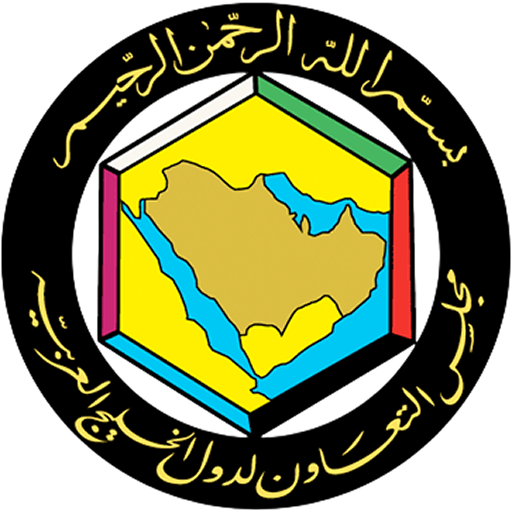In the digital era, the document scanner has become an essential bridge between traditional paper-based workflows and the modern digital environment. From corporate offices to home users, scanners are now indispensable tools for converting physical documents, photographs, and handwritten records into electronic formats. The shift toward digitization is driven by the growing need for efficient data storage, quick sharing, and enhanced accessibility. By scanning and converting documents into PDF, JPEG, or TIFF formats, individuals and businesses can manage large amounts of information without relying on bulky filing systems.
The transformation is also part of a broader global movement toward paperless offices and eco-friendly documentation practices. Organizations across industries, including education, healthcare, law, and finance, are integrating scanners into their digital document management systems (DMS). As a result, the humble document scanner has evolved into a cornerstone of digital transformation, enabling faster workflows, improved accuracy, and greater data security across interconnected systems.
The Technology Behind Document Scanners
At its core, a document scanner operates on a combination of optical and digital processing principles. When a document is placed on the scanner, it is illuminated by a light source—typically LED or xenon lamps—while sensors such as Charge-Coupled Devices (CCD) or Contact Image Sensors (CIS) detect the reflected light. The scanner’s internal processor then converts the captured light signals into a digital image file, preserving the visual details of the document. This digital data is stored in formats compatible with OCR software, image editors, and PDF readers.
More advanced scanners use dual-sensor arrays to achieve higher image accuracy, allowing for both color calibration and image enhancement. High-end brands like Canon, Epson, and Fujitsu employ proprietary image optimization technologies that correct skewed documents, adjust brightness levels, and remove background noise. Meanwhile, integration with AI-based image processing algorithms has made scanning smarter and more adaptive, ensuring that even poorly printed or aged documents can be restored to clarity in their digital form.
Different Types of Document Scanners
Document scanners come in a wide range of designs, each serving a specific function. The flatbed scanner remains one of the most popular types, known for its precision and versatility. It is ideal for scanning photographs, books, and delicate paper materials because it preserves every detail without causing damage. Businesses that require high-resolution scans often choose flatbed scanners due to their consistency and ability to handle diverse materials.
On the other hand, sheet-fed scanners are built for speed and efficiency. They use an Automatic Document Feeder (ADF) that allows multiple pages to be scanned in sequence, making them perfect for busy offices and enterprises. There are also handheld and portable scanners, which have gained traction among professionals who travel frequently or work remotely. Furthermore, with the rise of smartphones, mobile scanning apps such as Adobe Scan, CamScanner, and Microsoft Lens have enabled users to digitize documents using AI-enhanced camera technology. Each type of scanner serves a unique purpose, depending on user requirements for mobility, resolution, and volume.
Optical Character Recognition (OCR): The Game Changer
The introduction of Optical Character Recognition (OCR) completely revolutionized the role of document scanners. Instead of merely capturing an image, OCR enables the device to recognize printed or handwritten text within scanned files and convert it into editable and searchable content. This technology is the backbone of searchable PDFs and automated data extraction systems used in modern enterprises. OCR works by analyzing patterns, identifying characters, and reconstructing them into machine-readable text, allowing scanned documents to be used in Microsoft Word, Excel, or database systems.
Today’s OCR tools—such as ABBYY FineReader, Tesseract OCR, and Adobe Acrobat Pro OCR—employ artificial intelligence (AI) and machine learning to continuously improve recognition accuracy. These tools can now interpret multiple languages, complex document layouts, and even handwritten content. In industries like healthcare and finance, OCR has become indispensable for invoice scanning, patient data digitization, and contract management, helping organizations eliminate manual entry errors and streamline document handling.
Advantages of Using Document Scanners
The benefits of document scanning extend well beyond digitization. One of the most prominent advantages is efficiency—physical documents can be scanned and stored electronically within seconds, significantly reducing the time spent managing paper files. Digital documents are easier to organize, search, and share, which enhances productivity in collaborative environments. Scanning also supports remote accessibility, allowing users to retrieve files securely from cloud-based platforms such as Google Drive, Dropbox, and Microsoft OneDrive.
Another major benefit lies in data preservation and environmental sustainability. Paper documents degrade over time, while digital versions remain intact indefinitely when backed up properly. By adopting document scanning, businesses can drastically cut down on paper waste and storage costs, contributing to sustainable practices. Moreover, scanned records can be encrypted, ensuring data security and compliance with privacy standards like GDPR and HIPAA. The result is a workflow that is faster, greener, and far more secure than traditional filing systems.
Industrial and Professional Applications
Document scanners are vital tools across a variety of industries. In medical environments, they are used to convert patient records, insurance claims, and diagnostic reports into Electronic Health Records (EHRs). This enables healthcare providers to access accurate data instantly while maintaining strict confidentiality standards. Similarly, in the legal sector, scanning ensures that court documents, case files, and contracts are securely stored and easily retrievable. By converting these into searchable PDF archives, law firms can save time and meet compliance regulations efficiently.
The education and corporate sectors also benefit greatly from scanning technology. Schools and universities digitize research papers, historical archives, and examination records for easy online access. Meanwhile, businesses use scanners to manage invoices, employee records, and client contracts, integrating them with document management systems for smooth workflow automation. Even government agencies rely on high-volume scanners for e-governance initiatives, converting public records into digital formats to enhance transparency and accessibility.
Cloud Integration and AI-Driven Scanning
With the rapid expansion of cloud computing, document scanners have evolved to seamlessly integrate with cloud storage platforms. This advancement enables instant uploading, sharing, and backup of scanned files, ensuring that documents are accessible from any device worldwide. Scanners equipped with Wi-Fi and cloud connectivity can automatically sync data to platforms such as Dropbox, Google Workspace, or Box, reducing manual handling and the risk of data loss. This level of convenience supports remote work and collaborative operations, particularly for global businesses.
The incorporation of Artificial Intelligence (AI) has taken document scanning to a new level of automation. AI-powered scanners can detect document orientation, crop edges, remove shadows, and even recognize different document types automatically. Some enterprise solutions—like those from HP Enterprise Flow and Brother ADS Series—include smart classification features that categorize documents into folders based on content. AI-based tools also perform auto-naming, auto-tagging, and metadata extraction, transforming scanned data into structured, searchable information without human input.
Security and Compliance in Document Scanning
As digital document handling becomes more widespread, data security and regulatory compliance are now top priorities for organizations using document scanners. Scanned files often contain sensitive information—such as financial statements, legal agreements, or medical histories—that must be safeguarded against unauthorized access. To address this, modern scanners use encryption protocols, password-protected PDFs, and secure authentication systems. These features ensure that documents are only accessible to authorized users, maintaining confidentiality at every step.
Compliance with global standards such as GDPR, ISO 27001, and HIPAA is another crucial factor in secure document management. Manufacturers like Epson, Canon, and Fujitsu design scanners with firmware that supports encrypted transmission, secure erasure, and network isolation. Organizations can also implement digital rights management (DRM) and audit logs to monitor document handling and prevent misuse. In an age of increasing cyber threats, maintaining robust scanning security practices is essential for protecting organizational integrity and customer trust.
Future Trends in Document Scanning
The future of document scanning is shaped by automation, artificial intelligence, and environmental sustainability. Upcoming scanners will rely more on edge AI, enabling real-time image recognition, language translation, and data extraction directly on the device without external processing. The introduction of touchless scanning systems—where users simply wave documents beneath a sensor—will reduce physical contact and increase scanning speed. Integration with Internet of Things (IoT) ecosystems will further streamline document routing and organization across connected devices.
In addition, the trend toward eco-efficient design is gaining traction. Manufacturers are focusing on energy-efficient components, low-emission production, and recyclable materials. The use of blockchain for document verification and digital signature validation is another emerging area, ensuring authenticity and transparency in digital archives. As more businesses embrace paperless workflows, document scanners will continue to evolve from simple digitization tools into intelligent systems capable of understanding, managing, and securing data autonomously.
Conclusion
The document scanner has transformed from a basic office accessory into a central component of the digital transformation revolution. It enables individuals and organizations to convert physical data into secure, searchable, and easily shareable formats. Through technologies like OCR, AI, and cloud integration, scanners empower users to streamline their workflows, improve data accuracy, and support sustainability. Whether in healthcare, education, business, or government, the role of document scanning continues to expand with the demands of the digital age.
As we move toward a future dominated by automation and intelligent systems, the document scanner will remain a critical link between the physical and digital worlds. Its ability to capture, process, and preserve information ensures that no piece of knowledge is lost in transition. By embracing scanning technology, society is not only preserving the past but also paving the way for a smarter, more efficient, and environmentally responsible digital future.



 :
:









